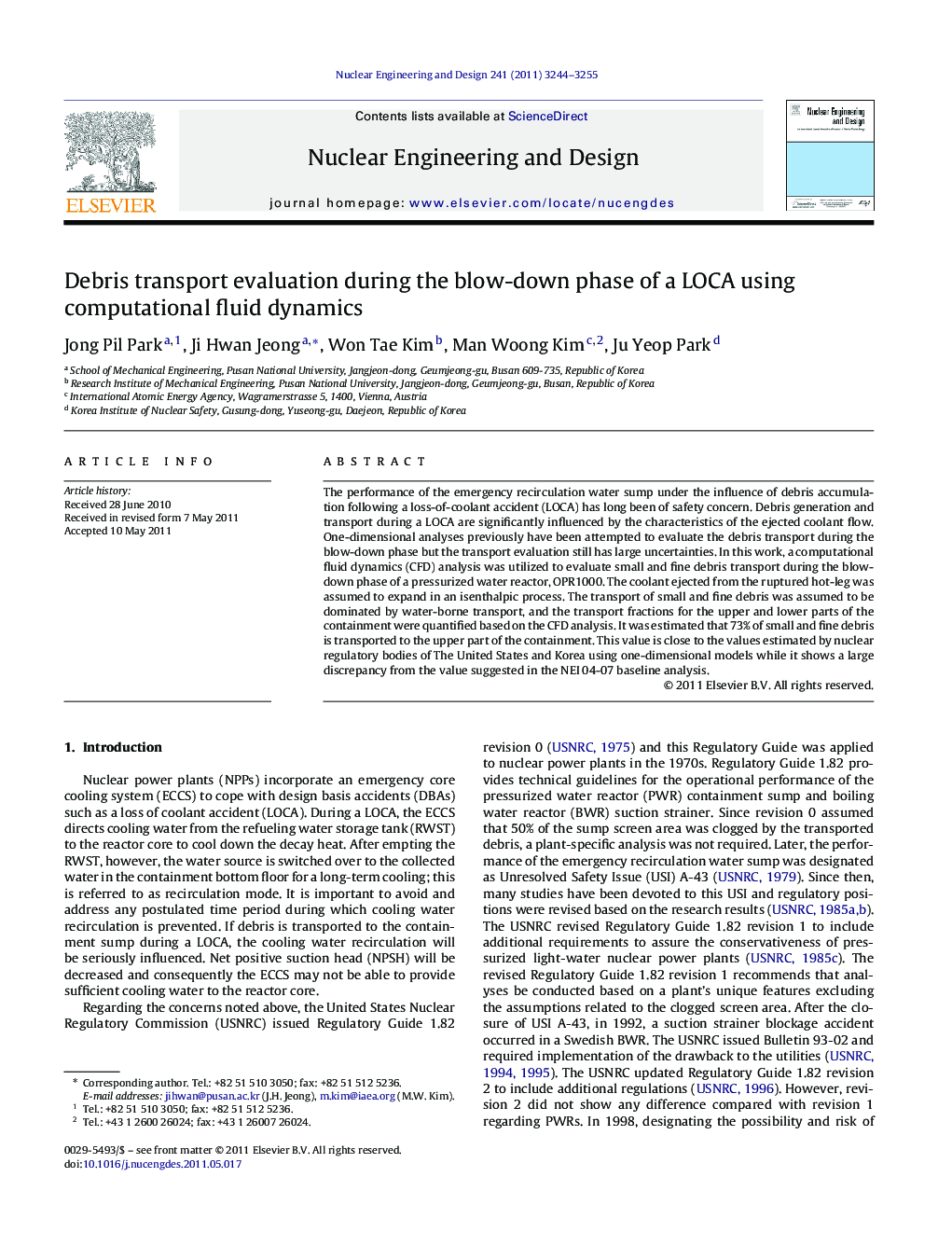| کد مقاله | کد نشریه | سال انتشار | مقاله انگلیسی | نسخه تمام متن |
|---|---|---|---|---|
| 297443 | 511756 | 2011 | 12 صفحه PDF | دانلود رایگان |

The performance of the emergency recirculation water sump under the influence of debris accumulation following a loss-of-coolant accident (LOCA) has long been of safety concern. Debris generation and transport during a LOCA are significantly influenced by the characteristics of the ejected coolant flow. One-dimensional analyses previously have been attempted to evaluate the debris transport during the blow-down phase but the transport evaluation still has large uncertainties. In this work, a computational fluid dynamics (CFD) analysis was utilized to evaluate small and fine debris transport during the blow-down phase of a pressurized water reactor, OPR1000. The coolant ejected from the ruptured hot-leg was assumed to expand in an isenthalpic process. The transport of small and fine debris was assumed to be dominated by water-borne transport, and the transport fractions for the upper and lower parts of the containment were quantified based on the CFD analysis. It was estimated that 73% of small and fine debris is transported to the upper part of the containment. This value is close to the values estimated by nuclear regulatory bodies of The United States and Korea using one-dimensional models while it shows a large discrepancy from the value suggested in the NEI 04-07 baseline analysis.
► We conducted CFD simulation on the spreading of the coolant in the containment after a break of the hot leg. It is used to estimate the dispersion of the debris within the containment.
► It was assumed that the small and fine debris is transported by the discharge flow so that a fraction of the small and fine debris transport can be estimated based on the amount of water.
► The break flow was assumed to be a homogeneous two-phase mixture without phase separation. Isenthalpic expansion of the break flow was used to specify the inlet boundary condition of the break flow.
► The fraction of the small and fine debris transported to the upper part is 73%; this value is close to the value calculated using 1D lumped-parameter codes by the USNRC and the KINS, respectively, while 48% more than the value shown in the NEI 04-07.
Journal: Nuclear Engineering and Design - Volume 241, Issue 8, August 2011, Pages 3244–3255